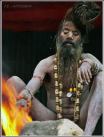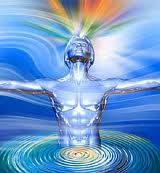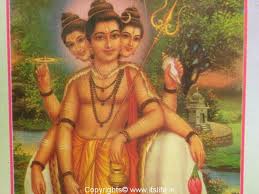07 Dec 2012
by newtempledayton
in AJAH, teachings
Tags: Ajah, all I need is love, be healthy, buddhist, dattatreya, dialectual monism, eat right, enlightenment, enviromentalism, free spirit, ganja, God, guru, handfasting, hippie, holy herb, kali weed, love, magick, mantra, martial arts, moksha, monism, native american, non-dualism, om, om mani padme hum, om namo shivaya, pagan scriptures. pagan monk., rasta, shakti, shiva, tao, tribal, vibrate the cosmos, warriors, weheguru, wicca, work out, yoga
Book of Ajah…
a book written only while in the highest heavens…
It will be typed, spell checked, and published to all to see…
It is the words of the heart. The words of God… brought to you as a gift of inspiration. blessings on all beings, close and distant.
12 Aug 2012
by newtempledayton
in Uncategorized
Tags: Ajah, all I need is love, be healthy, buddhist, dattatreya, dialectual monism, eat right, enlightenment, enviromentalism, free spirit, from the heart, ganja, God, guru, hindu, hippie, holy herb, jiva, kali weed, love, magick, mantra, martial arts, moksha, monism, native american, non-dualism, om, om mani padme hum, om namo shivaya, peace, primative, rasta, sacrament, scripture, sihk, soul, spirit, tao, the first scripture, the true bible, tribal, vibrate the cosmos, warrior, warriors, weheguru, wicca, work out, yoga
The most important scripture in Ajah Dharma are the words held within the lotus of the heart…. when an individual trys to read the scripture of the heart, one speaks Gibberish (this is the same phenomenon as found in Pentecostal churches, as speaking in Tongues).
Through mystical and spiritual knowledge anyone can translate the words of the heart into the language that the individual speaks, for example Latin, Sanskrit, Tibetan, or English…
This is how all the worlds scripture is written, the mind hears the truth of the heart(the self) and translates it into revelation…Written scriptures are books where we get a lot of Knowledge and Inspiration from. God can be found with in the heart and speaks to us the truth and deep down we always know the truth. The word of Ajah is written in our hearts and this quality is used when reading scriptures to decide what feels like truth and what does not.
I read my heart and I can best translate the scripture of the heart as;
Peace, Love, Compassion, Humility, and Integrity. (check Ajah: tenets)
you can say it a million different, ways but this is the truth of Love.
—–
I have read different philosophies that espouse the same idea, for example;
the mystical Sufi Muslims, claim the true word, Allah is written on the heart.
the Rastafaians, claim that second half of the bible is written on your heart.
the Hindus say a deity lives within the heart.
Buddhist say mantra is sung by the heart.
I’ve heard from Buddhists and Hindus both have told me that the letter ‘om’ is written on the heart
05 Aug 2012
by newtempledayton
in AJAH, kundalini, Ritual, Uncategorized
Tags: Ajah, all I need is love, be healthy, chief, dattatreya, dialectual monism, ego, enlightenment, enviromentalism, free spirit, ganja, ganja guru, God, guru, hindu, hippie, holy herb, holy order, kali weed, king, mantra, martial arts, monism, mystic, om mani padme hum, om namo shivaya, one love, prophet, ras, Rastafari, sadhu, seer, self, vibrate the cosmos, warriors, weheguru, white rasta, yoga
One of the most distinctive (in my mind anyway) Rasta lingo is the substitution”I-and-I” for other pronouns, usually the first person. “I”, as used in the examples above, refers to Jah; therefore, “I-and-I” in the first person includes the presence of the divine within the individual.

As “I-and-I” can also refer to “us,” “them,” or even “you,” it is used as a practical linguistic rejection of the separation of the individual from the community, and God its self.
The term is often used in place of “you and I” or “we” among Rastafari, implying that both persons are united under the love of Jah.
I and I is a complex term, referring to the oneness of God and every human.
I and I is an expression of total oneness, the oneness of two persons. So God is within all of us and we’re all one people. The bond of brotherhood is the bond of God, of man. But man itself needs a head and the head of man is the Supreme self Jah.
I and I is the best way to describe this essential truth, I & I means to me, the ego-self and the god-self. I & I , the brain and the soul…
In Ajah I will often refer to I&I when im speaking to show the self in the Brain & the soul, or of the mind and the divine within.
this is a concept to think on
03 Aug 2012
by newtempledayton
in AJAH, kundalini, Ritual, Scripture, teachings, Uncategorized
Tags: Ajah, all I need is love, be healthy, Bhakti yoga, buddhist, dattatreya, Deity yoga, devotion, dialectual monism, eat right, enlightenment, enviromentalism, free spirit, ganja, guru, hippie, loving god, loving the universe, mantra, martial arts, non-dualism, om, om mani padme hum, om namo shivaya, pure love, sacrament, shakti, shiva, sihk, tao, warriors, weheguru, wicca, worship, yoga
Ultimately all duality, including you and god, are false… However liberation through devotion is the easiest way to enlightenment…
When one worships God. One is worshiping the self, as all is one, God is considered the unified whole of the universe. When one dualistically worships a deity, the false Ego is worshiping the highest true buddha self, who is perfection in our minds… In Bhakti Yoga it is said that you love until you become the object of your affections. When Bhakti(devotion yoga) combined with Jnana(wisdom yoga) and other yogas spiritual knowledge is perfected.
In Ajah Dharma we call the male godhead the Great Spirit because he is the one spirit or self shared by all beings… The female godhead is called Mother Nature because she is the “outer” part of the one thing, material nature, however the godheads are expressed as the awareness & body-mind.
In a way the ego is falling in on it’s self.
I remember when i was a boy I watched a cartoon, in the cartoon the Hero was under a curse of obedience…
the others said “How do we break the curse?”
The Heroine said “We don’t, we use the curse…”
“Act as if you were’nt under any spell.” and the hero woke up..
Bhakti’s the same way, instead of doing difficult meditations all you have to do is worship, and you will attain liberation… useing the mind against the mind, and for the nourishment of the Spirit…
God can be behind you were its hard to see… behind the illusion, behind your thoughts, etc..
or you can be in front of God…. in front of you as a diety, in front of you as the symbol, etc…
03 Aug 2012
by newtempledayton
in AJAH, teachings
Tags: Ajah, all I need is love, be healthy, bhakti, buddhist, dattatreya, dialectual monism, eat right, enlightenment, enviromentalism, free spirit, ganja, guru, handfasting, hindu, hippie, holy herb, jnana, kali weed, karma, love, magick, mantra, martial arts, non-dualism, om mani padme hum, om namo shivaya, raja yoga, sihk, tantra, tao, vedanta, vibrate the cosmos, warrior, warriors, weheguru, wicca, work out, yoga
As I understand it there are five Yogas. The aim of yoga is moksha or nirvana, which is liberation from all worldly identification and the cycle of birth and death (samsara), at which point there is a realization of identity with Ajah. The aim of yoga, or of the person practicing yoga, is the attainment of a state of perfect spiritual insight and tranquility through meditating on the unity of Ajah.
The Five systems for attaining liberation are:
- Bhakti Yoga: Union with God through devotion
- Karma Yoga: Union with God through selfless action
- Jnana Yoga: Union With God through Wisdom
- Raja Yoga: Union with God through focused meditation
- Tantra Yoga: Union with God through the manipulation of the subtle energies.
03 Aug 2012
by newtempledayton
in teachings
Tags: Ajah, all I need is love, avatar, be healthy, buddhist, dattatreya, dialectual monism, eat right, enlightenment, free spirit, ganja, guru, handfasting, hindu, holy herb, kali weed, living Christs, love, magick, mantra, martial arts, moksha, nirvana, om mani padme hum, om namo shivaya, primative, rasta, sacrament, shakti, shiva, sihk, supreme, tao, tribal, warriors, weheguru, wicca, yoga
“He who seeks god finds himself, he who seeks the self finds god” -guru mooji
In Ajah Dharma it is understood that there are two types of enlightenment and it is also understood that a true Spiritual master can switch between them at will. for example the Buddha would enjoy unified existance in meditation but would return to dualistic existance to teach people…
If you are Awakened, If you understand your unity, you are a god, a deity, Ajah(God) with attributes, with a mind & body….

Also called dualistic enlightenment. For one knows that one is supreme, and are free from illusion. But still desiring to accomplish things keeps one wanting for a body, and therefore will still want to get another body, and still enjoys dualistic existence as one still has a personality. However through sacred knowledge, one is able to navigate the Bardo or the empty space were awareness goes after death, and may desire to be desireless for the sake of liberation from rebirth, ergo one attains Nirvana.
Often Awakened people will practice a discipline to maintain correct vision. as well as have faith and call upon the dualistic expression of the supreme higher self which is the Great Spirit
Examples
- Shamans
- Yogis
- Bodhisattvas
- medicine men
- Taoists
- Sorcerers
- some saints
- Sihks
If you are fully liberated, if you understand your unity & are devoid of desire,you are emptiness, you are God without attributes, you are holy nothingness, and you renounced the mind & body…

This is the state of renouncement, a state of pure bliss were the jiva(the individual) renounces all worldly action. When ones awareness is shifted from the body&mind to the spirit. While resting in the unmovable spirit, one lives in a state of unified bliss, and may even wander off at times because the lack of good and bad feelings.
Unified existence is called Samhadi and is attained through the discipline of meditation
Examples
- Sannyasis
- Buddhas, especially Hinayana
- some Saints
- Advaita Saints
- wise hermits
02 Aug 2012
by newtempledayton
in AJAH, kundalini, Ritual, Scripture, teachings, Uncategorized
Tags: Ajah, all I need is love, be healthy, buddhist, dattatreya, dialectual monism, enlightenment, enviromentalism, free spirit, ganja, guru, handfasting, hindu, kali weed, magick, mantra, martial arts, moksha, monism, non-dualism, vibrate the cosmos, weheguru, wicca, work out, yoga
“He who seeks god finds himself, he who seeks the self finds god” -guru mooji
“Just remember it’s a grand illusion, and deep inside we’re all the same.” -Styx wisdom

29 Jul 2012
by newtempledayton
in teachings
Tags: Ajah, all I need is love, be healthy, buddhist, dattatreya, dialectual monism, eat right, enlightenment, enviromentalism, free spirit, ganja, guru, handfasting, love, magick, mantra, martial arts, moksha, monism, non-dualism, om, om mani padme hum, om namo shivaya, shakti, shiva, tree of life, tribal, vibrate the cosmos, warriors, weheguru, yoga
The period of 40 days has been widely recognized as an auspicious period both in the East and the West since ancient times. A traditional way to do an extended practice of Om Namah Shivaya mantra is to choose a number of repetitions per day, and to do that for 40 days. The mind likes to have a beginning and end to a practice, a sense of completion, such as comes with a 40 day (or longer) practice.
Fixed time per practice session: Mind finds comfort in knowing that it will do the practice of one round of 108 repetitions (or some other number of rounds), and that each round will take a predictable amount of time.
Same number of rounds: Mind also likes the predictability of doing a certain number of rounds done per day. Mind may resist at times, but once it gets started in the practice, mind likes the habit.
Specific number of days: Mind also likes the plan of knowing how many days or months a practice will take to complete. This can be very beneficial in stabilizing a noisy mind, which is a common complaint.
A mala is a set of counting beads with 108 beads. Only 100 are counted, with the other 8 considered an offering to the divine, however you personally hold that. You might choose to do 1, 2, 3, 4, or more rounds of 108 mantras per day, counting with a set of mala beads.
It has been said that there is freedom in discipline; choosing to do a regular practice frees the mind from wondering what practice will be done that day. It is also important not to do the mantra practice with rote repetition, but rather, with feeling and awareness.
By running your own experiment for 40 days, you can decide for yourself whether or not the practice of Om Namah Shivaya mantra is beneficial.
Extended practice
A noticeable level of mantra siddhi (power of the mantra) is said to come with 125,000 repetitions of a mantra (Such an extended practice is called a purascharna). This is equivalent to 1250 rounds of a mala.
Such an extended practice with Om Namah Shivaya mantra can have a tremendous effect in stabilizing the mind in preparation for advancing in meditation. Such a practice simply must be done personally to understand the benefits. It does take quite a commitment to do this practice every day for such a long period, but it is well worth the effort.
In choosing the level of practice per day, it is important to have stability from one day to the next, and to not skip any days. It is best to choose the level that works for you consistently, rather than changing the number from day to day. For example, if two rounds per day is a good number, then it’s better to stay with that amount each and every day, not to do none on one day, but four on the next day.
enjoy! remember to check out the pages…
29 Jul 2012
by newtempledayton
in teachings
Tags: Ajah, all I need is love, be healthy, buddhist, enlightenment, enviromentalism, free spirit, ganja, guru, handfasting, hindu, hippie, holy herb, kali weed, love, magick, mantra, martial arts, moksha, monism, native american, om, om mani padme hum, om namah shivaya, om namo shivaya, peace, primative, rasta, sacrament, shiva, sihk, tao, vibrate the cosmos, warrior, warriors, weheguru, wicca, work out, yoga

Om Namaḥ Śivāya is the most holy name of God Śiva, recorded at the very center of the Vedas and elaborated in the Śaiva Agamas.
Na is the Lord’s concealing grace, Ma is the world, Śi stands for Śiva, Va is His revealing grace, Ya is the soul. The five elements, too, are embodied in this ancient formula for invocation. Na is earth, Ma is water, Śi is fire, Vā is air, and Ya is ether, or Ākāśa. Many are its meanings.
Namaḥ Śivaya has such power, the mere intonation of these syllables reaps its own reward in salvaging the soul from bondage of the treacherous instinctive mind and the steel bands of a perfected externalized intellect. Namaḥ Śivāya quells the instinct, cuts through the steel bands and turns this intellect within and on itself, to face itself and see its ignorance. Sages declare that mantra is life, that mantra is action, that mantra is love and that the repetition of mantra, japa, bursts forth wisdom from within.
The holy Natchintanai proclaims, “Namaḥ Śivāya is in truth both Āgama and Veda. Namah Śivāya represents all mantras and tantras. Namaḥ Śivaya is our souls, our bodies and possessions. Namaḥ Śivāya has become our sure protection.”
—Satguru Sivaya Subramuniyaswami
The book “The Ancient Power of Sanskrit Mantra and Ceremony: Volume I” by Thomas Ashley-Farrand defines Om Namah Shivaya as:
“This mantra has no direct translation. The sounds relate directly to the principles which govern each of the first five chakras on the spine…Earth, water, fire, air, ether. Notice that this does not refer to the chakras themselves which have a different set of seed sounds, but rather, the principles which govern those chakras in their place. A very rough, non-literal translation could be something like, ‘Om and salutations to that which I am capable of becoming.’ This mantra will start one out on the path of subtle development of spiritual attainments. It is the beginning on the path of Siddha Yoga, or the Yoga of Perfection of the Divine Vehicle.”
OM/AUM: The three parts of Om (A-U-M) encompass the three states of waking, dreaming, deep sleep, the three levels of gross, subtle, causal, and the three levels of conscious, unconscious, subconscious, as well as the three universal processes of coming, being, and going. Absolute silence beyond the three levels is the silence after AUM. It also refers to Tripura, the one who live in the “three cities” as in Mahamrityunjaya Mantra, as well as the light referred to in Gayatri Mantra.
Namah/Namaha: Adoration, homage, respect. Nothing is mine (as an individual person); everything is thine (as the Absolute Reality). The three levels of Om, the three worlds of gross, subtle, and causal, along with the three states of waking, dreaming, and deep sleep states of consciousness, as well as the three levels of conscious, unconscious, and subconscious themselves are “not mine” as the true properties of who I really am. Truly, “nothing is mine.” Rather, everything, all of these triads is “thine” or the “other” as the Absolute Reality.
Shivaya/Shiva: That Absolute Reality that is the ground out of which the others emerge. It is that “ink,” so to speak, that is not separate from the many forms which may appear to manifest or be created from that ink. In the Realization of this, one comes to see that he or she is one and the same with the Absolute Reality. The Mahavakyas, the great utterances, are seen to be true. Shiva (the static or ground) and Shakti (the active or creative) are seen to be one and the same. She (Shakti), while one with Shiva is realized in direct experience as the one in the three worlds (Tripura) outlined in Om.
26 Jul 2012
by newtempledayton
in teachings, Uncategorized
Tags: Ajah, all I need is love, be healthy, buddhist, dattatreya, dialectual monism, eat right, enlightenment, free spirit, ganja, guru, handfasting, hindu, hippie, holy herb, kali weed, love, magick, mantra, martial arts, moksha, monism, native american, non-dualism, om mani padme hum, rasta, shiva, sihk, spiritual path, stages, tao, tips, vibrate the cosmos, weheguru, wicca, yoga
1) the first thing is the basic desire for happiness, one usually first tries indulgence.

2) after failing to find solace one tries spirituality…

3) next you find a spiritual path that encourages spiritual growth
Hindu, Buddhist, Sihk, Taoist,Gnostic Christianity, Sufi (islam mystics), kabbalah (Jewish mystics)…just to name a few…

sadhu baba

Buddhist monks

Sihk warrior-saints

a Shaman
4) now you are an initiate… In this stage you strictly follow the wisdom of saints, sages, and masters. It is a purifying stage of spiritual evolution… there has yet to be any true experience only faith in secondhand knowledge. In this stage you follow strict codes, rules, and regulations…. you use these strict rules as a boat to carry you towards illumination and enlightenment.

massive muslim prayer- an example of devotion
5) This is the real beginning of the journey…. you experience unity yourself. a samhadi (dissolution of the self in meditation) you experience this truth yourself for the first time….
This is called an “illumination” true knowledge is attained, but you may periodically “fall from grace” so to speak. One exercises and learns to control this divine state via spiritual practice (sadhana), the more absorbed in that state you become, the more the ego is dropped off.
This should be thought of as a spiritual awakening or ‘little’ enlightenment… at this point having known Buddhahood firsthand, one is fit to teach a disciple…

spiritual awakening

waking up to see the sun shining
6) Solidification of knowledge…. once you stay in your pure awareness, once you stop identifieing with the mind-body organism, you are one with God, in a perfect Yoga(union), a living Buddha….
Thank you for reading,

As you read you receive infinite blessings, via written transmission.
Previous Older Entries















